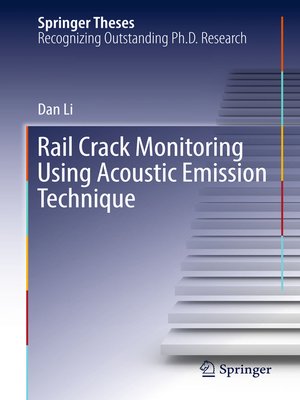
Sign up to save your library
With an OverDrive account, you can save your favorite libraries for at-a-glance information about availability. Find out more about OverDrive accounts.
Find this title in Libby, the library reading app by OverDrive.



Search for a digital library with this title
Title found at these libraries:
| Library Name | Distance |
|---|---|
| Loading... |
This thesis provides an innovative strategy for rail crack monitoring using the acoustic emission (AE) technique. The field study presented is a significant improvement on laboratory studies in the literature in terms of complex rail profile and crack conditions as well as high operational noise. AE waves induced by crack propagation, crack closure, wheel-rail impact and operational noise were obtained through a series of laboratory and field tests, and analyzed by wavelet transform (WT) and synchrosqueezed wavelet transform (SWT). A wavelet power-based index and the enhanced SWT scalogram were sequentially proposed to classify AE waves induced by different mechanisms according to their energy distributions in the time–frequency domain. A novel crack sizing method taking advantage of crack closure-induced AE waves was developed based on fatigue tests in the laboratory. The propagation characteristics of AE waves in the rail were investigated, and Tsallis synchrosqueezed wavelet entropy(TSWE) with time was finally brought forward to detect and locate rail cracks in the field. The proposed strategy for detection, location and sizing of rail cracks helps to ensure the safe and smooth operation of the railway system. This thesis is of interest to graduate students, researchers and practitioners in the area of structural health monitoring.







